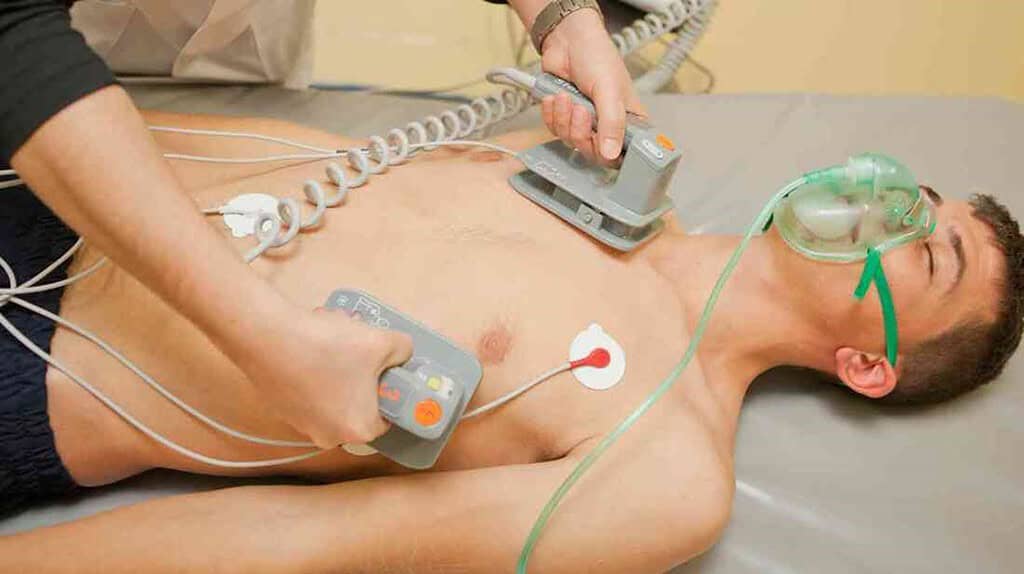
Every year, hundreds of thousands of people experience cardiac arrest outside of hospitals. For most, the odds are grim. Only about 10% survive. But what if a simple change in how we use defibrillators — those life-saving devices that deliver electric shocks to restart the heart — could dramatically improve those odds?
A new study led by researchers at Oregon Health & Science University (OHSU) suggests it can. By placing one defibrillator pad on the chest and the other on the back, instead of the standard placement of both pads on the chest, the chances of survival more than doubled.
It’s a shocking improvement that costs nothing but could reshape how emergency responders and even bystanders approach cardiac arrest.
“Clear!”
When the heart suddenly stops beating, every second counts. Without immediate intervention, irreversible brain damage begins within minutes. Defibrillators are designed to shock the heart back into a normal rhythm, but their effectiveness depends on how well the electrical current reaches the heart.
Traditionally, defibrillator pads are placed in an anterior-lateral (AL) position: one on the right side of the chest, just below the collarbone, and the other on the lower left side, near the armpit. But the OHSU team wondered if a different approach — placing one pad on the chest and the other on the back, known as anterior-posterior (AP) positioning — might work better.
To find out, they analyzed data from the Portland Cardiac Arrest Epidemiologic Registry, which tracked 255 patients who experienced out-of-hospital cardiac arrest (OHCA) between 2019 and 2023. All had shockable heart rhythms — ventricular fibrillation (VF) or pulseless ventricular tachycardia (pVT) — where the heart’s electrical activity is chaotic but still present.
The results were striking. Patients with AP pad placement had a 2.64-fold greater chance of regaining spontaneous circulation compared to those with AL placement. “The key is, you want energy that goes from one pad to the other through the heart,” said Mohamud Daya, MD, a professor of emergency medicine at OHSU and the study’s senior author.
Why It Works
The researchers believe that AP positioning “sandwiches” the heart, allowing the electrical current to flow more broadly through the organ. This could make defibrillation more effective, especially in cases where the heart’s rhythm is severely disrupted.
However, there’s a catch. Rolling a patient onto their side to place a pad on their back isn’t always practical, especially if they’re overweight. “It can be hard to roll people,” Daya said. “Emergency medical responders can often do it, but the lay public may not be able to move a person. It’s also important to deliver the electrical current as quickly as possible.”
The standard AL placement remains a reliable option when AP positioning isn’t feasible. But for trained responders, the study suggests that AP placement could be a game-changer.
For Dr. Joshua Lupton, the study’s lead author, this research is deeply personal. In 2016, Lupton survived an out-of-hospital cardiac arrest thanks to rapid defibrillation. He has no memory of the event but knows it changed the course of his life. After recovering, he completed medical school and shifted his research focus to improving outcomes for cardiac arrest patients.
“I didn’t expect to see such a big difference,” Lupton said of the study’s findings. “The fact that we did may light a fire in the medical community to fund some additional research to learn more.”
While the study’s results are promising, the researchers caution that this was an observational study, not a controlled clinical trial. More research is needed to confirm the benefits of AP positioning and to determine how it might be implemented in real-world settings.
For now, the findings add to a growing body of evidence that small changes in emergency care can have a big impact. As Lupton put it, “The less time that you’re in cardiac arrest, the better. The longer your brain has low blood flow, the lower your chances of having a good outcome.”
Every second — and every shock — counts.
The findings appeared in the journal JAMA Network Open.






